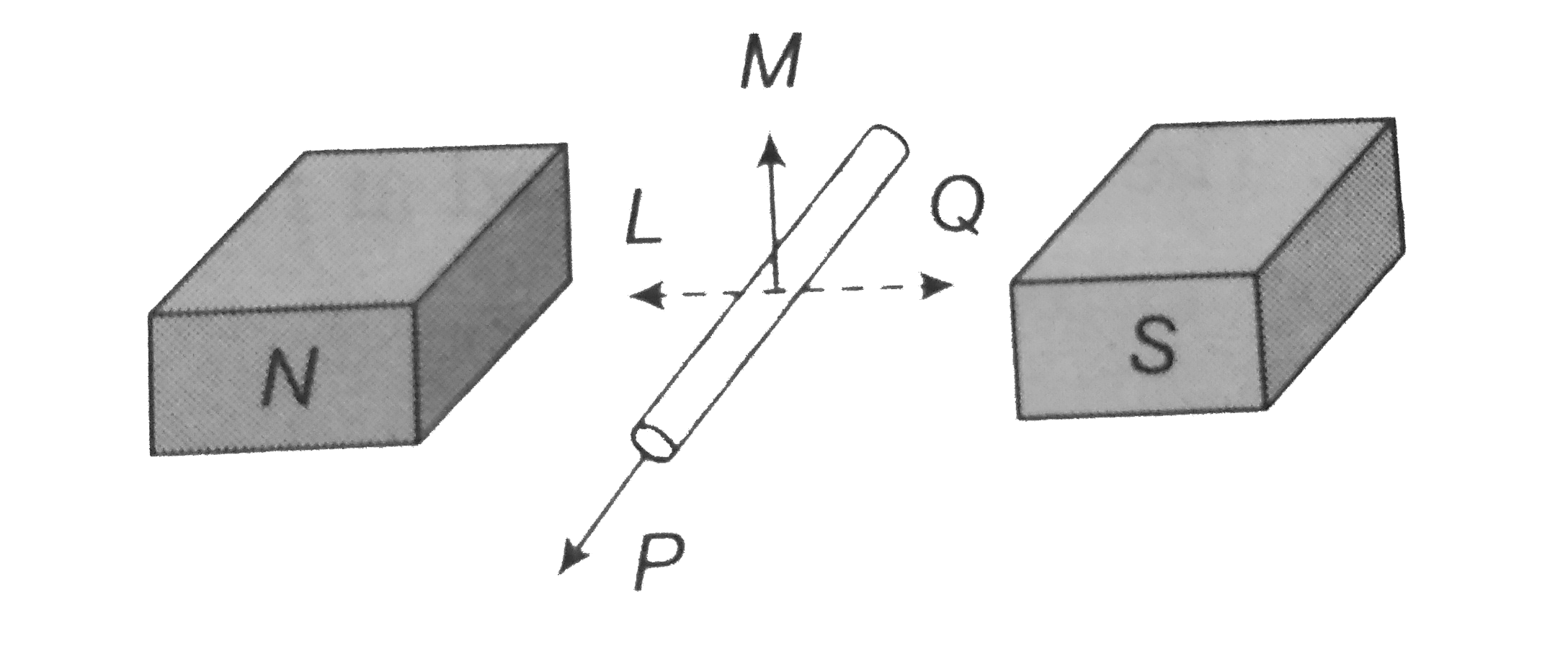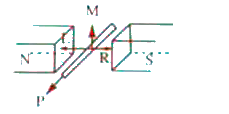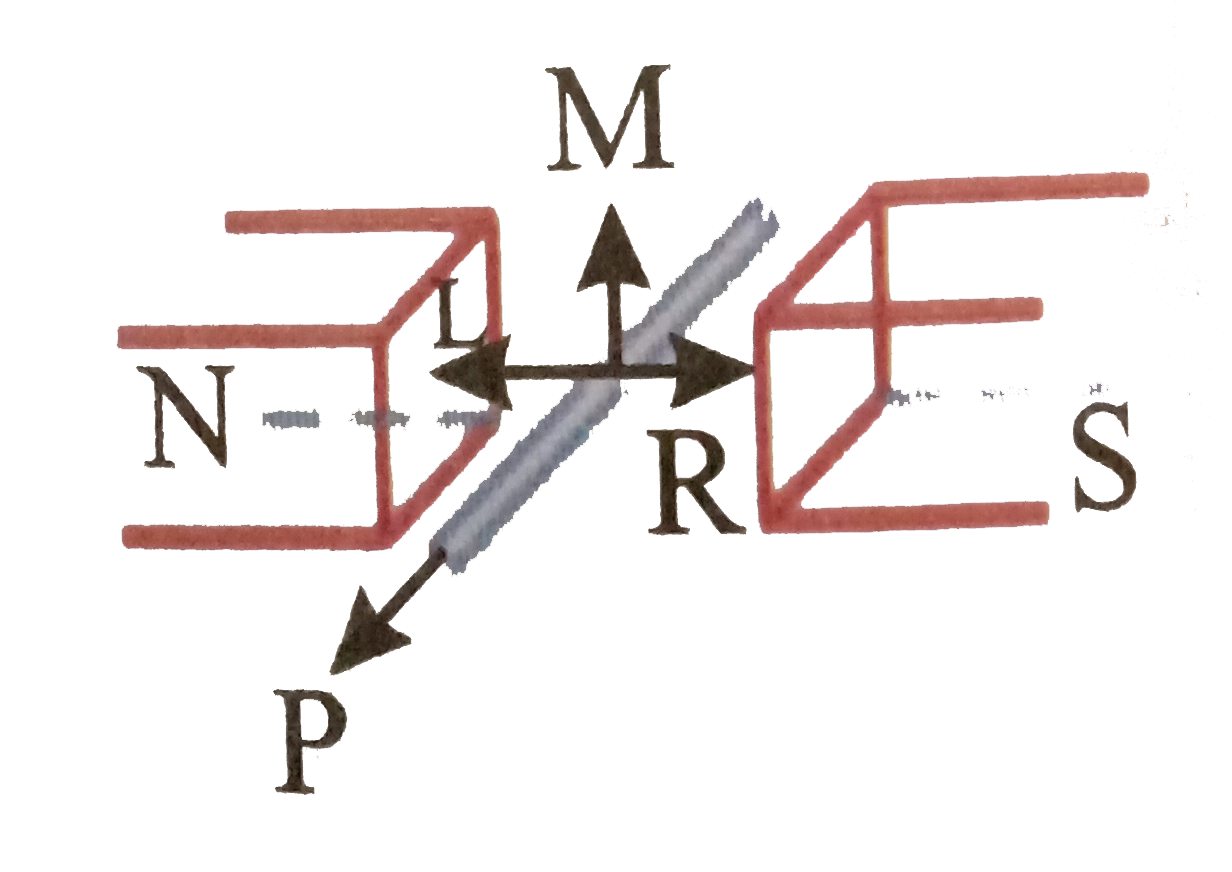An electric potential difference will be induced between the ends of the conductor shown in the diagram, when the conductor moves in the direction

P
Q
L
M
The correct Answer is:D
cionductor cuts the flux only when, if it moves in the direction of M.
Topper's Solved these Questions
- ELECTROMAGNETIC INDUCTIONBOOK - A2ZCHAPTER - ELECTROMAGNETIC INDUCTIONEXERCISE - Section D - Chapter End Test
30 Videos
- ELECTROMAGNETIC INDUCTIONBOOK - A2ZCHAPTER - ELECTROMAGNETIC INDUCTIONEXERCISE - AIPMTNEET Questions
27 Videos
- ELECTRIC POTENTIAL & CAPACITANCEBOOK - A2ZCHAPTER - ELECTRIC POTENTIAL & CAPACITANCEEXERCISE - Section D - Chapter End Test
29 Videos
- ELECTROMAGNETIC WAVES AND COMMUNICATION SYSTEM BOOK - A2ZCHAPTER - ELECTROMAGNETIC WAVES AND COMMUNICATION SYSTEM EXERCISE - Section D - Chapter End Test
30 Videos
Similar Questions
An electric potential difference will be induced between the ends of the conductor shown in the figure, if the conductor moves in the direction shown by

View SolutionAn electric potential difference will be induced between the ends of the conductor shown in the diagram when it moves in the direction

View Solution
Knowledge Check
An electric potential difference will be incduced between the ends of the conductor shown in the figure, if the conductor moves in the direction shown by
 APBRCLDM
APBRCLDMAn electric potential difference will be induced between the ends of the conductor shown in the diagram when it moves in the direction
 APBQCLDM
APBQCLDMCharge flows between two ends of a conductor when
Aequal and same type of charges are present at the two endsBdifferent electric potentials exist at the two ends of a conductorCthe potential difference between the ends is zeroDsame electric potential is present at the two ends
Find the emf induced across the ends of the conductor shown in the figure

View SolutionWhen will the induced current in the electrical conductor (coil) be maximum?
View SolutionMention the condition under which a current can flow in a conductor .
View SolutionIf the potential difference across the ends of a conductor is i volt and the current flowing through the conductor is 1 ampere,the resistance of the conductor?
View SolutionWhen a potential difference is applied across the ends of a linear metallic conductor
View Solution
